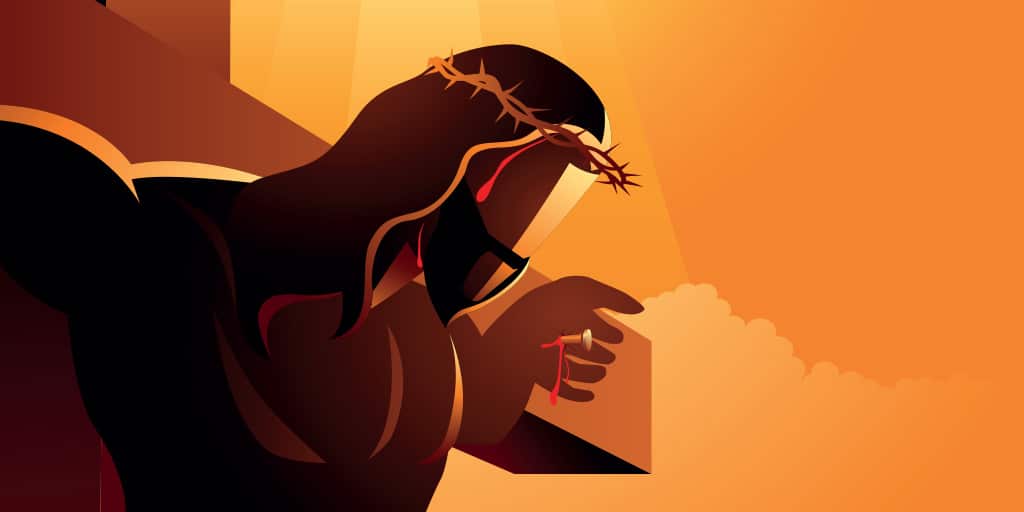A Study of Theology III – Part 10

THEOLOGICAL DICTIONARY
Theology
Resurrection of Christ
Job 19:25-27
A Study of Theology III – Part 10 (Dr. Thomas Figart)
For Christians the death of Christ is vital, but as Paul tells us, without the resurrection our faith is in vain.
A Study of Theology III – Part 10
Dr. Thomas Figart
- The Saviour (con’t)
- The Resurrection of Christ.
- Old Testament prophecies of the Resurrection of Christ.
1). The Patriarch Job. In Job 19:25-27 Job knew of his Redeemer who would stand in the latter days on the earth; therefore the Redeemer would have to be raised from the dead in order to fulfill this prophecy.
2). The Law: Feast of Firstfruits, Lev. 23:9-11, cf. 1 Cor. 15:20-23. Guaranteed in the type: certainty of our resurrection and similarity to His resurrection body.
3). The Psalms.
a). Ps. 2:7 cf. Heb. 1:5; Acts 13:30-33 proves that Ps. 2:7 refers to Christ’s resurrection, not His birth.
b). Ps. 16:8-11 cf. Acts 2:14-28; 13:34-37. These Acts passages prove to be referring back to Ps. 16 in order to prove the resurrection of Christ, not merely a message about David.
c). Ps. 110:1 cf. Acts 2:32-36. The ascension necessarily relates to the death and resurrection of Christ; He is exalted because He overcame death and the grave.
d). Ps. 118:22-24 cf. Acts 4:10-11. The Headship of Christ is mentioned, thus He must be raised from the dead in order to become the Head.
4). The Prophets.
a). Isaiah 52:13-53:12. In 52:13 three significant statements are made: “He shall be exalted” (raised) yarum; to arise;”and extolled” (ascended) nasa, to lift up;”and be very high” (seated at God’s right hand) gabah-me-odh, to be exalted and honored greatly. In 53:10, He shall prolong (arik) His days (resurrection).
b). Jonah 2:1-9 cf. Matt. 12:39-41. The Lord used Jonah as a type of His death. The important thing here: a limit is set on His burial; He expected to arise after three days.
- N.T. prophecies by Christ concerning His resurrection.
1). Matt. 16:21; 17:23; 20:17-19; Mk. 9:30-32; Lk. 9:22, 44-45; John 2:19-22; 12:7. His disciples did not believe Him when He spoke of His impending death and resurrection, but they did believe afterward.
2). The attitude of the unbelieving Jews toward these prophecies, Matthew 27:63-64. They were so concerned that they wanted to make sure that He could not be raised, or stolen away (which would promote such an error).
- The Fact of the Resurrection. Seven proofs:
1). At least 16 recorded appearances testify to the fact of His resurrection, Matt. 28, Mk. 16; Lk. 24; Jn. 20. These appearances were over a 40-day period, in different places, to many different people. He appeared to large groups, small groups, making deception impossible. Some were still living as eyewitnesses when Paul wrote about the resurrection in 1 Cor. 15:6.
2). The Empty Tomb
a). The disciples examined the tomb, so they were not deceived, John 20:1-10.
b). If the tomb were not empty the Jews would have found the body and ended all talk of resurrection at once. The fact that they did not indicates that Christ actually rose from the dead.
c). The soldiers were commissioned to keep the body from being taken. They were bribed to lie, saying they slept on the job while the disciples stole the body, and the Jews promised them exemption from punishment, Matt. 27:62-66; 28:11-15.
3). The character of the witnesses. The disciples would be the last to be fooled, yet were hardest to convince that He would rise from the dead, Jn. 2:19-22. Once convinced, they were willing to die for the truth of the resurrection.
4). The change in the disciples as noted in Acts 4:10; 5:40-42; 10:40; 13:30-37. Joy and boldness in preaching the resurrection is manifested in the same men who denied Christ at His crucifixion. In fact, they performed miracles by the power of the resurrected Christ.
5). The Day of Pentecost. Apart from the resurrection there is no explanation for the coming of the Holy Spirit, in fulfillment of Christ’s promises before His death (John 14:16-17; 16:7) and after His resurrection (Acts 1:4-6). Peter’s sermon in Acts 2 also emphasizes this.
6). The observance of the first day of the week, Acts 20:7; 1 Cor. 16:2. Why this change from worship on the seventh day, if there was no resurrection?
7). The existence of the Church, Where any extensive group maintains existence for centuries there has to be a reason; for the Church that reason is the resurrection of Christ.
- The Nature of the resurrection body of Christ.
1). It was the same body that was buried; He used the nail holes to show this, Zech. 12:10 cf. Jn. 19:37; 20:25-29.
2). It was a body unlimited and unrestricted by solid materials or distance, Lk. 24:17-36; Jn. 20:19.
3). It was a body of flesh and bones which could be felt, Lk.24:39-40; Matt. 28:9.
4). It was a body which consumed food, Lk. 24:42-43.
- The doctrinal significance of the Resurrection.
1). It is a stated proof of His Person, John 5:25-26; Acts 2:24, 36; Rom. 1:4, He is declared Son of God by His resurrection.
2). It is a settled proposition concerning His Work, 1 Cor. 15:1-4, 17-20. Without the resurrection, our faith is vain, we are yet in our sins. See Rom. 4:25, “He rose on account of (dia with accusative) our justification.”
3). It is a sure promise of His Coming again, Jn, 14:1-3; Acts 2:25-36, note the word “until” in v. 35 which shows He is coming again.








